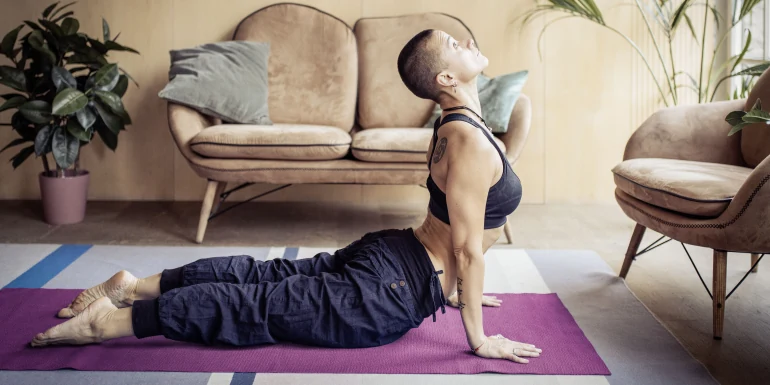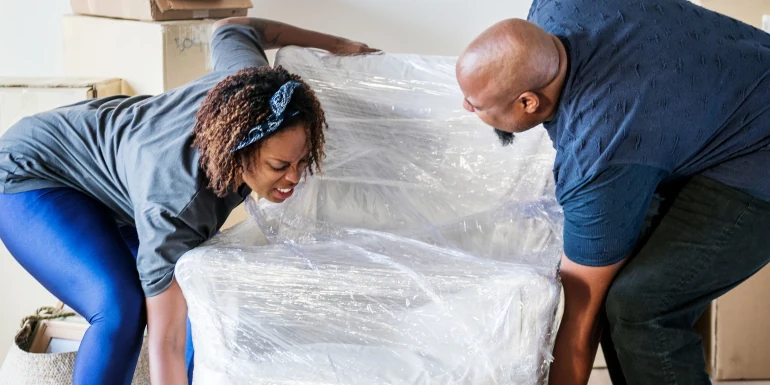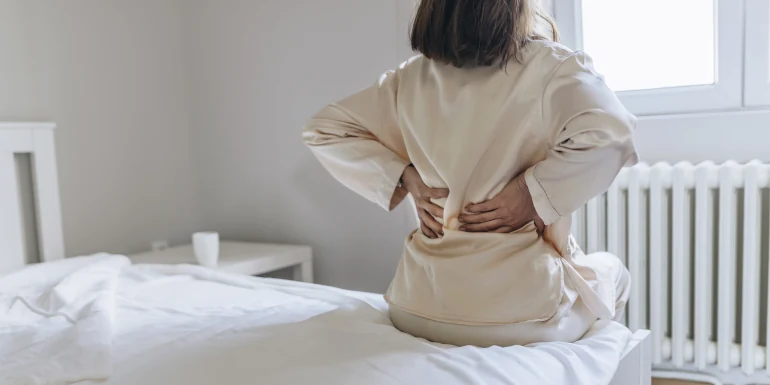
What helps with tension?
The most common cause of back problems is muscle tension. How does it occur and what helps to counter it? Let’s find out.
Tension is often painful and restricts movement. The tightness in the muscles can often be felt, and can cause neck and shoulder pain, and headaches and dizziness, among other issues.
What is tension and how does it occur?
Tension occurs mostly in the neck, back and shoulder area. It can also affect other areas of the body. For example, if you grind your teeth because you are stressed, you may also feel tension in your jaw.
Tension is a functional impairment of the body. If the muscles are constantly tensed, blood circulation is impaired. They don’t get enough oxygen and they harden. This leads to pain in the affected area of the body.
Bad posture and muscle imbalance
Sitting down all the time is not healthy for your back. Furthermore, if you have bad posture when you are sitting, this can lead to tension, which then tempts you to adopt a relieving posture. This further shortens and tightens the muscles.
It’s worth noting that unilateral strain often begins with the feet. Check if the soles of your shoes wear down evenly.
Strain and overload
Strain can occur during sport and other types of physical exertion. If the muscles are overstretched or even pulled, other muscles start to compensate for them. This causes a muscular imbalance, whereby the muscles continue to shorten or stiffen.
Magnesium deficiency
Magnesium and calcium ensure that the muscles can tense and relax properly. A magnesium deficiency can contribute to muscle tension.
Lack of exercise
Exercise is important to strengthen the back muscles and to prevent or reduce pain in the long term. Weak back muscles tense up when overloaded.
Good to know: the positive effects of exercise don’t become immediately apparent. Furthermore, it’s also possible for the pain to get worse at the beginning. The muscles have to get used to the exertion first. Keep going!
Mental strain
When you are stressed or experience other kinds of mental strain, you subconsciously tense certain muscle groups. Typically, you bring your shoulders up or clench your teeth. This overloads the affected muscles. Just like with bad posture, the overloaded person adopts a relieving posture. This tenses and hardens other muscles.
What helps relieve tension?
In the case of tension, circulation needs to be increased in the affected areas. Warmth, movement, massage and various medicinal herbs can help.
When your muscles are tense, you shouldn’t just alleviate the symptoms; you should also find out what the triggers are. This will allow you to prevent the tension and pain from becoming chronic. You can focus on improving your posture, for example, not only by training your back, but also your core muscles. Make sure to take enough breaks from sitting, or change your position when seated.
Warmth
Warmth can help to relieve pain caused by acute tension. It promotes circulation and relaxes the muscles. A warming ointment, cherry stone cushion or a bath can help.
Stretching and relaxing
Stretch the affected muscle groups until you can feel a gentle pull. Stay in this position for 30 to 60 seconds and then return to the starting position while inhaling. Do this several times a day.
Example: circle your shoulders in a clockwise direction 10 times, and then in an anticlockwise direction.
Release tension with the Helsana Coach app
You can find various exercises for releasing tension in the Helsana Coach app. Choose the affected area of the body and follow the Helsana Coach’s instructions.
Massage
A massage relaxes the muscles and the soul, and promotes better circulation. You can treat tension yourself through massage, or by using a tennis ball, fascia roller or acupressure mat.
Relaxation
Is stress the reason behind your tension? Then try some relaxation exercises and mindfulness training such as yoga, meditation and progressive muscle relaxation.
Ointments and medication
Pain medication helps to relieve pain and reduce inflammation. Gels and ointments for pain have a similar effect.
Please note: pain medication can help relieve acute complaints in the short term. However, do not take these for more than three days without seeking advice from a doctor.
Medicinal plants
Various medicinal plants such as nettle, willow bark and arnica can help relieve tense muscles. They promote circulation and reduce inflammation.
Magnesium
Make sure you get enough magnesium. Some examples of food that contain magnesium are: oats, nuts, wholegrain products and bananas.
Tackling back pain with complementary medicine
Complementary treatment such as massages, osteopathy and acupuncture can help with back problems. COMPLETA covers you for 75% of costs for outpatient treatment and 100% of costs up to a maximum of CHF 5,000 per year for inpatient treatment.

Evelyne Dürr (Msc in Human Movement Sciences, ETH; CAS workplace health promotion) joined Helsana in 2014. As a health management specialist, she helps customers engage with prevention and health promotion. Evelyne Dürr gave the editorial team advice and input for this article.



Newsletter
Find out more about current health issues every month and get all the information you need about our attractive offers from all Helsana Group companies * delivered by e-mail to read whenever it suits you. Our newsletter is free of charge and you can sign up here:
We did not receive your information. Please try again later.
* The Helsana Group comprises Helsana Insurance Company Ltd, Helsana Supplementary Insurances Ltd and Helsana Accidents Ltd.
